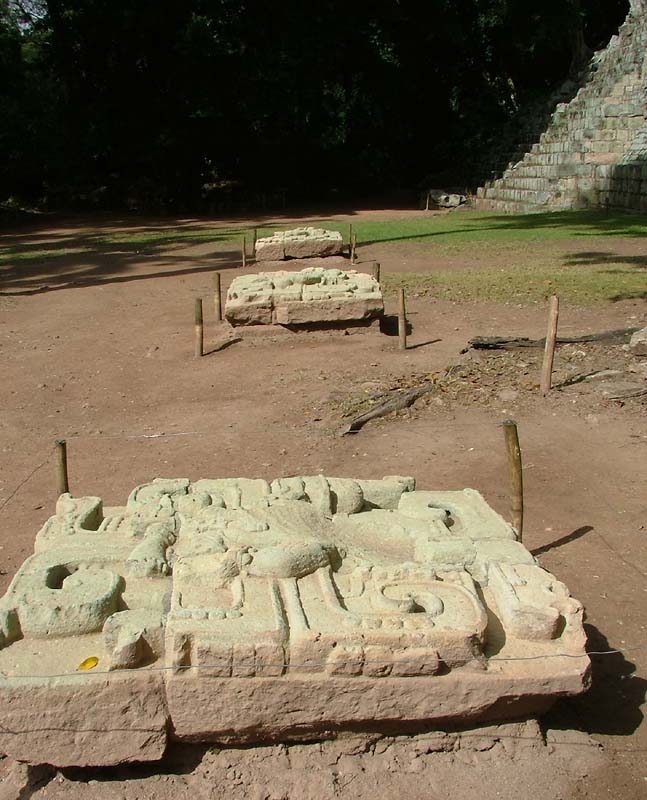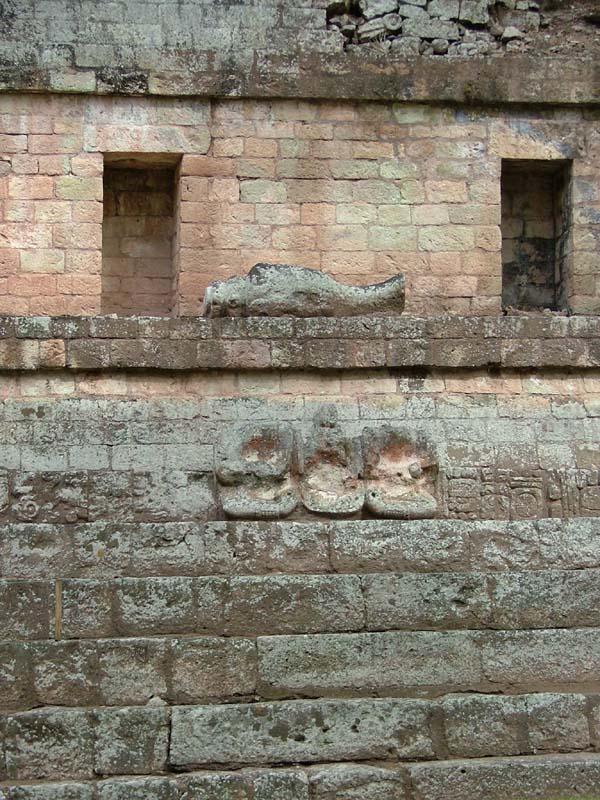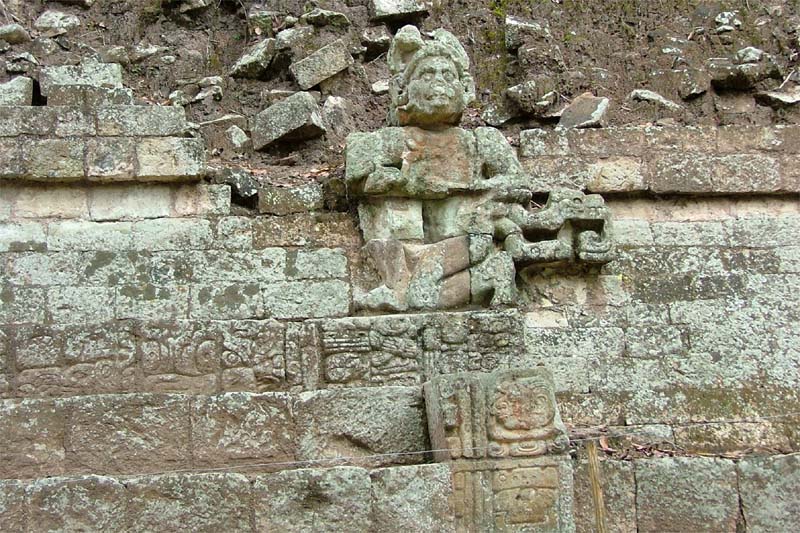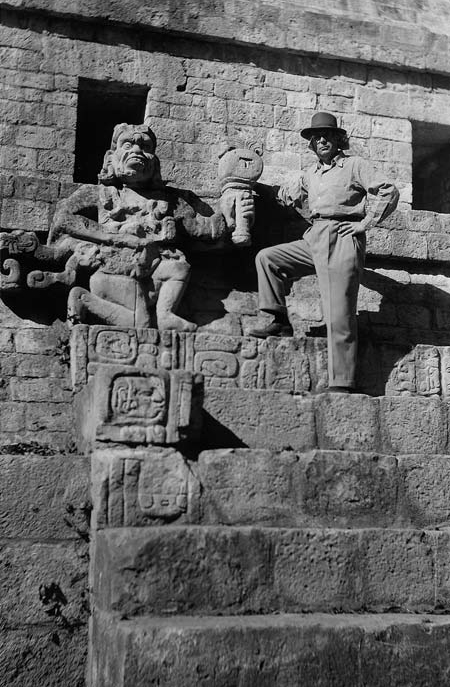

The Reviewing Stand, built against the first terrace of Temple 11, was dedicated on March 27, 769
Yax Pac, the last great king of Copan, came to the throne amid impending ecological disaster.
"At least twenty thousand people were trying to eke out a living from the badly strained resources. This population simply could not be supported by local agriculture alone, especially since the best land was buried under the expanding residential complexes around the Acropolis. The quality of life, which was never very good in the preindustrial cities of the ancient world, fast deteriorated toward the unbearable in Copan under the pained gaze of its last great king.
Through the building [of Temple 11] and the Otherworld portal it housed at the junction of its dark corridors, Yax-Pac began his lifelong effort to ward off the impending disaster than hung over the valley.
We are not sure of the exact starting date for the construction [of Temple 11], but work on it must have begun in the first few years of Yax-Pac's reign. Six years later, on March 27, 769, following the celebration of the equinox, Yax-Pac dedicated the Reviewing Stand on the south side of the Temple.
This Reviewing Stand faced the inner court and temples of his forebearers which studded the West Court of the Acropolis. Built against the first terrace of the pyramid that would eventually support Temple 11, the Reviewing Stand was a metaphorical Xibalban Ballcourt..."
Linda Schele & David Freidel, A Forest of Kings: The Untold Story of the Ancient Maya, p. 322

"The Reviewing Stand was a metaphorical Xibalban Ballcourt, complete with three rectangular markers set into the plaza floor below in the pattern of a playing alley."
Linda Schele & David Freidel, A Forest of Kings: The Untold Story of the Ancient Maya, p. 322-3
Note: Xibalba was the Maya underworld, home of the Gods of Death

"Huge stone conch shells marked the terrace as the surface of the Xibalban waters.
It was the "place of fright," the Otherworld where sacrificial victims were sent into the land of the Lords of Death to play ball and to deliver messages from the divine ahau.
With the construction of such an elaborate, theatrical ballcourt, Yax-Pac was making an important statment about his strategies for the kingship: he would require himself to excel in battle against noble enemies and bring these enemies here to die."
Linda Schele & David Freidel, A Forest of Kings: The Untold Story of the Ancient Maya, p. 323



The six hieroglyphic stairs jutting out from the Reviewing Stand carried an inscribed history of its dedication rituals and names the structure a symbolic "ballcourt."

Pál & Elizabeth Kelemen were pioneers in the field of Mesoamerican Art History. Visiting Copán in 1940, they wrote: "The ruins at Copán, built in the well-watered valley of the Copán River, were quite different from the Maya cities in Yucatán.
Our first impression was of the open monumentality of the place. First, we crossed a wide, level field framed with low mounds and ruins, among them one tall stela. There was a sort of acropolis, a vast, apparently man-made mound, 100 feet high with irregular additions, the sides of which seemed held together by stairs, as if bound by giant ribbons.
The soft green color of the stone enhanced the grace of its outline. On the face of the longest wall, perhaps the first to be built, the riser of the top step was decorated with a bold band of glyphs. Huge ceiba trees broke through the ascent and warped the flowing line. On top was a series of open spaces, surrounded by low buildings.
The building stone seemed to have especially lent itself to carving in the round. The sequence of the various stairways added to the total effect of astounding lightness and grace. A demon figure, holding a writhing snake in its mouth, crouched at the top of the stairs on the other side."
Pál & Elizabeth Kelemen, The Kelemen Journals: Incidents of Discovery of Art in the Americas, 1932–1964, p. 58, p. 62


Entrances into the temple open out to each of the cardinal directions and each contains a portion of continuous glyphic text
This is the north/south corridor through Temple 11, and represents the Skeletal Maw to the Otherworld.
Just inside each entrance, panels record historical events important to Yax-Pac's political strategy and the dedication of the temple itself. Eroded glyphs of the southeast panel can be glimpsed on the interior wall.
The panels of this text give a fascinating insight into Maya religious sensibility. Please follow this link to the north side of Temple 11 to read more about the astonishing inscriptions.